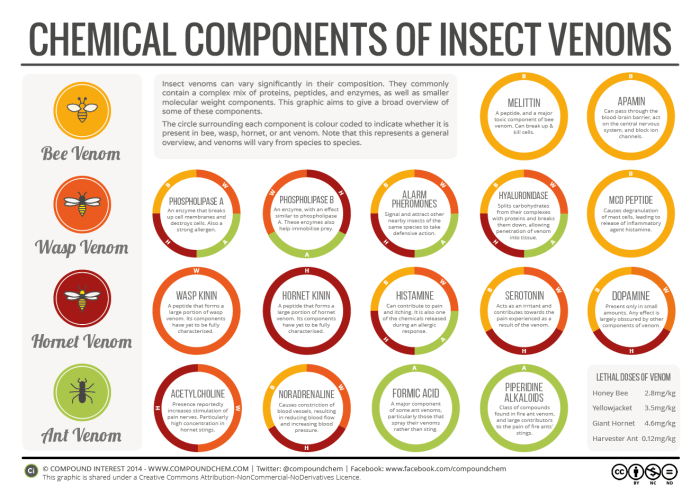
Insect venoms are complicated. Really complicated. You could be forgiven for thinking that it must be a relatively simple company of chemicals that makes up the painful sensation of a bee or wasp sting, but in fact a hugely complex mixture of all sorts of compounds – proteins, peptides, enzymes, and other smaller molecules – go into a small amount of venom. The range of compounds is far too vast to detail every single one – but we can examine some of the major constituents in bee, wasp, hornet and ant venom.







